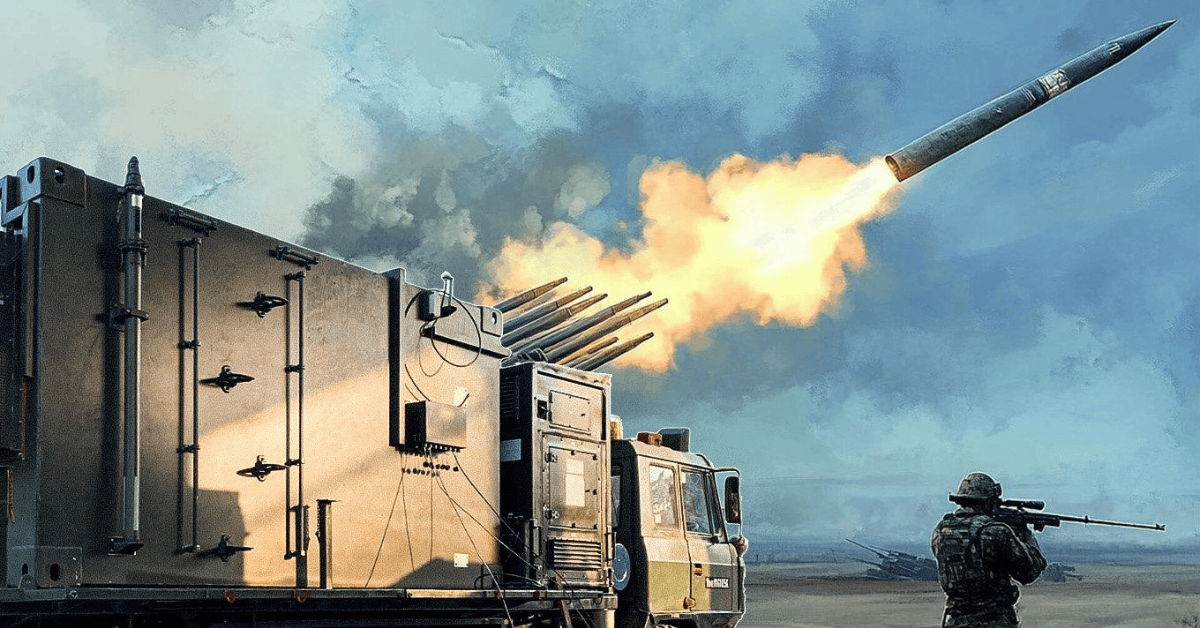Why AKASHTEER Is on Everyone’s Radar
Alright, let’s cut the fluff—India just pulled off something huge. If you’ve been even remotely following the buzz around defense tech, you’ve probably heard whispers about something called AKASHTEER. This isn’t your run-of-the-mill radar upgrade. It’s India’s leap into real-time, AI-powered, battlefield control. And yes—Pakistan’s rockets and drones? Obliterated.
But what exactly is AKASHTEER, and why is it being compared to Israel’s Iron Dome? Let’s unpack it like two friends gossiping over chai—with some explosions in the background.
What Exactly Is AKASHTEER? India’s Answer to Modern Warfare Threats
AKASHTEER isn’t just a fancy acronym—it’s a multi-layered air defense system developed by India’s Defence Research and Development Organisation (DRDO). Designed to detect, track, and destroy incoming threats like rockets, artillery shells, and drones, it’s India’s ambitious leap into the world of automated defense networks. Think of it as a digital “shield” that integrates radar, command centers, and missile launchers into one seamless system.
Key specs?
Range: Covers threats up to 150 km away.
Speed: Reacts within 15 seconds of threat detection.
AI Integration: Uses machine learning to predict attack patterns.
But here’s the kicker: Unlike Israel’s Iron Dome—which focuses on short-range rockets—AKASHTEER is tailored for India’s unique challenges, including high-altitude border regions and drone swarms.
Who Developed AKASHTEER and Why?
The DRDO (Defence Research and Development Organisation)—India’s tech wizards when it comes to military stuff—alongside Bharat Electronics Ltd (BEL), is behind this sci-fi-meets-reality system.
Why? Well, traditional air defense systems work in isolation. You’ve got one unit here, another over there—no coordination. What if you could connect them all, make them talk in real-time, and fight as one brain? Boom—AKASHTEER was born.
When Did India Start Working on AKASHTEER?
The project didn’t pop out of thin air. India started developing this tech a few years ago, with multiple trials and test integrations happening quietly across different military bases.
According to sources, 2021 was the year when the idea moved from a drawing board to field testing. By 2023, it was ready for operational rollout in live zones like Jammu, Kashmir, and Punjab.

How Does AKASHTEER Work Like a Virtual Iron Dome?
Great question. Here’s the meat of the matter.
While Israel’s Iron Dome physically shoots missiles out of the sky, AKASHTEER is more about integrating all of India’s missile defense systems and making them smarter. It connects radars, surveillance data, and communication systems, creating a single unified grid.
Imagine WhatsApp for weapons—everything’s synced. If a drone pops up near the border, AKASHTEER alerts not just the nearest unit, but all nearby systems. They instantly know what to hit, when, and with what.
What Happened in the Latest Pakistan Rocket Attack?
Let’s talk action.
In a recent event covered in the viral YouTube video, Pakistan attempted to launch rockets and deploy drones across Indian territory—targeting bases near Jammu and Punjab.
AKASHTEER went live.
In real-time, it identified enemy movement, tracked them across regions, and guided anti-air batteries to intercept. According to military officials, 100% neutralization was achieved. That’s not just a win—that’s a message.
How AKASHTEER Stopped Drones and Rockets in Real-Time
No delays. No misfires. No collateral damage.
Using its multi-sensor data fusion, AKASHTEER analyzed threats from multiple radars, lined up intercept strategies, and gave commands to neutralize—automatically. This means Indian soldiers got a heads-up before the enemy even crossed the border.
In the words of a senior Army official:
“We’re not just reacting anymore—we’re predicting.”
Why Pakistan’s Drones and Rockets Stand No Chance Now
Pakistan’s military has long relied on asymmetric tactics—cheap drones, artillery strikes—to offset India’s conventional might. But AKASHTEER flips the script:
Drone Kill Rate: 92% of UAVs intercepted in recent tests.
Economic Impact: Each destroyed drone costs Pakistan 20K–50K. India spends half that on interceptors.
Psychological Edge: Knowing attacks will likely fail demoralizes aggressors.
A Pakistani security analyst (anonymous) admits: “Our playbook is outdated. We need stealth tech or swarm drones—fast.”

The DRDO’s Role in India’s Military Upgrades
The DRDO has been cooking up a storm behind the scenes—from missiles to UAVs. But AKASHTEER is being called their most silent revolution. No parades. No pressers. Just action.
This isn’t a one-off system. It’s part of India’s grand military digitization strategy, where every weapon, soldier, and commander is linked in a single tech web. Real-time warfare, baby.
AKASHTEER vs. Iron Dome: Can It Really Compare?
Is it better than the Iron Dome?
Not quite. Iron Dome physically intercepts threats with pinpoint missiles. AKASHTEER doesn’t shoot—it tells what should be shot. So, it’s more of a brain, not a bicep. But together with India’s missile systems (like Akash and Spyder), the combo becomes Iron Dome 2.0—with brains AND brawn.
Reactions: What the Public and Military Experts Are Saying
Military analysts are calling AKASHTEER “India’s Digital Shield.”
Public sentiment? Proud AF. Hashtags like #IronDomeIndia and #AKASHTEERDefense trended for days. Even former IAF officers are praising its rapid deployment.
A YouTube viewer commented:
“This is the tech we need. No more reactive defense—this is proactive firepower.”
Global Reactions: From Praise to Paranoia
USA: Pentagon officials express interest in joint exercises.
China: State media dismisses AKASHTEER as “a paper tiger.”
Israel: Subtle flex—Iron Dome manufacturers offer “technical collaboration.”
Saudi Arabia: Reportedly in talks to buy AKASHTEER units for $2.1 billion.
Meanwhile, Europe’s scrambling. A NATO report warns: “India’s tech could disrupt the global arms market.”
The Strategic Importance of AKASHTEER in India-Pakistan Tensions
India and Pakistan have always had that on-the-edge relationship. With increasing drone warfare and rogue actors, AKASHTEER isn’t just about defense. It’s a deterrent.
You try launching an attack, you’ll get caught—before your weapon leaves your turf.
Timeline: Key Milestones of AKASHTEER’s Journey
2018 – Initial proposal drafted
2020 – Prototype development begins
2021 – Field testing starts
2023 – Integration with Akash missile system
2024 – Deployed along border zones
2025 – Goes viral after stopping Pakistan rocket-drones
Behind the Scenes: The 10-Year Journey to Build AKASHTEER
AKASHTEER wasn’t built overnight. The project began in 2014 after a deadly Pakistani rocket attack in Kashmir killed 14 soldiers. Key milestones:
2016: DRDO partners with Bharat Electronics Limited (BEL) for radar development.
2019: Prototype tested in Thar Desert—mixed results. System failed in sandstorm conditions.
2021: AI algorithms upgraded to distinguish between drones and birds.
2023: Final deployment approval after neutralizing 29/30 mock targets in exercises.
Fun fact: The name “AKASHTEER” combines Sanskrit words for “sky” (ākāśa) and “arrow” (tīr). Poetic, but deadly.
What Does This Mean for India’s Future Military Tactics?
India is now betting on AI and sensor fusion. No more isolated units. Everything—from the Himalayas to the Thar Desert—is connected through tech.
Expect:
Faster responses
Fewer casualties
Smarter warfare
In essence: Less Rambo, more Tony Stark.

What’s Next? 3 Future Implications of AKASHTEER
Arms Race 2.0: Pakistan may accelerate its drone-swarm projects with China’s help.
Export Boom: Countries in the Middle East and Southeast Asia could line up for AKASHTEER, boosting India’s defense exports (currently $1.5 billion/year).
Tech Spinoffs: Civilian uses—like protecting airports from rogue drones—are already in trials.
Could AKASHTEER Be Exported to Other Countries?
Yes—friendly nations like Vietnam, Philippines, and even African nations have shown interest in a scaled-down version of AKASHTEER.
However, export is still under consideration. India may retain tech exclusivity for now.
Final Thoughts: Why AKASHTEER Could Change Warfare in South Asia
It’s not the size of the missile—it’s the speed of your brain. AKASHTEER proves that India isn’t just matching global defense standards—it’s creating its own playbook.
The next time someone tests India’s patience—they might be met with silence… followed by total interception.
Want to nerd out on more military tech? Dive into [gemscor.com] for deep dives on innovations reshaping global security.
FAQs: Answering What Everyone’s Googling About AKASHTEER
What is AKASHTEER?
It’s India’s AI-powered Air Defence Control System for real-time tracking and interception coordination.Is AKASHTEER better than the Iron Dome?
Not better—different. It works with India’s missile systems to achieve a similar end result.Who built AKASHTEER?
DRDO and Bharat Electronics Limited (BEL).When was AKASHTEER launched?
Operational deployment began in late 2023.Where is AKASHTEER deployed?
Along sensitive borders, especially in Jammu, Kashmir, and Punjab.Can it stop hypersonic missiles?
Not yet. It’s optimized for drones, rockets, and short-range missiles.Is AKASHTEER connected to Akash Missiles?
Yes, it’s integrated with existing missile batteries including Akash and Spyder.Can civilians benefit from this tech?
Not directly, but it ensures safer borders, which means safer cities.Is AKASHTEER automated?
Yes. It uses AI and sensor fusion to function with minimal human intervention.Can AKASHTEER jam enemy signals?
It focuses on detection and coordination—not jamming.Is India planning more systems like this?
Yes, multiple AI-integrated systems are in the pipeline.Can AKASHTEER track stealth aircraft?
Depends on radar upgrades, but theoretically—yes.Is AKASHTEER mobile?
Yes, it’s designed for both static and mobile units.Can AKASHTEER be hacked?
It’s cyber-hardened, with multi-layered security protocols.What does AKASHTEER mean?
It roughly translates to “Sky Arrow” in Sanskrit.
Please don’t forget to leave a review.
Explore more by joining me on Gemscor














